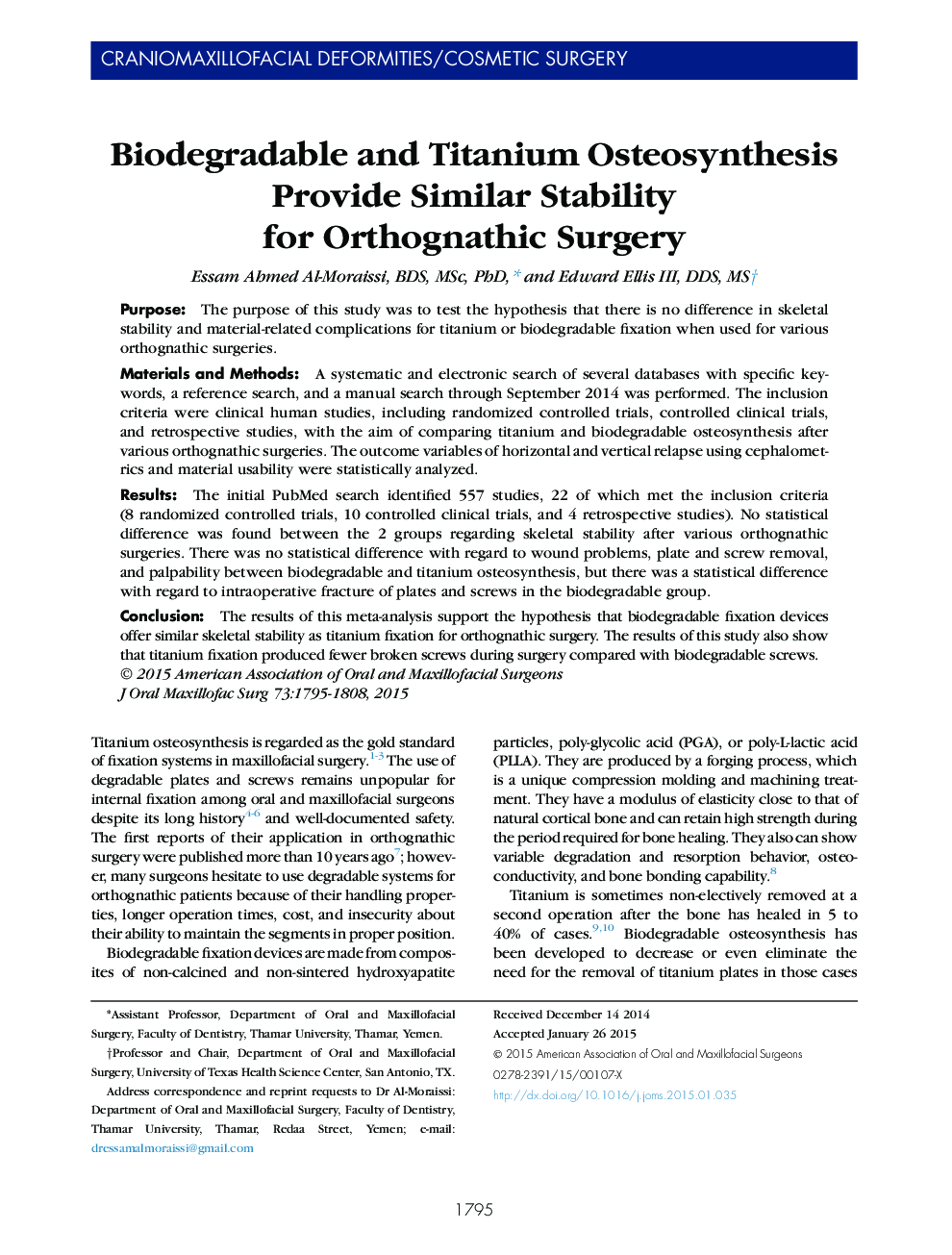| Article ID | Journal | Published Year | Pages | File Type |
|---|---|---|---|---|
| 3152273 | Journal of Oral and Maxillofacial Surgery | 2015 | 14 Pages |
PurposeThe purpose of this study was to test the hypothesis that there is no difference in skeletal stability and material-related complications for titanium or biodegradable fixation when used for various orthognathic surgeries.Materials and MethodsA systematic and electronic search of several databases with specific keywords, a reference search, and a manual search through September 2014 was performed. The inclusion criteria were clinical human studies, including randomized controlled trials, controlled clinical trials, and retrospective studies, with the aim of comparing titanium and biodegradable osteosynthesis after various orthognathic surgeries. The outcome variables of horizontal and vertical relapse using cephalometrics and material usability were statistically analyzed.ResultsThe initial PubMed search identified 557 studies, 22 of which met the inclusion criteria (8 randomized controlled trials, 10 controlled clinical trials, and 4 retrospective studies). No statistical difference was found between the 2 groups regarding skeletal stability after various orthognathic surgeries. There was no statistical difference with regard to wound problems, plate and screw removal, and palpability between biodegradable and titanium osteosynthesis, but there was a statistical difference with regard to intraoperative fracture of plates and screws in the biodegradable group.ConclusionThe results of this meta-analysis support the hypothesis that biodegradable fixation devices offer similar skeletal stability as titanium fixation for orthognathic surgery. The results of this study also show that titanium fixation produced fewer broken screws during surgery compared with biodegradable screws.
